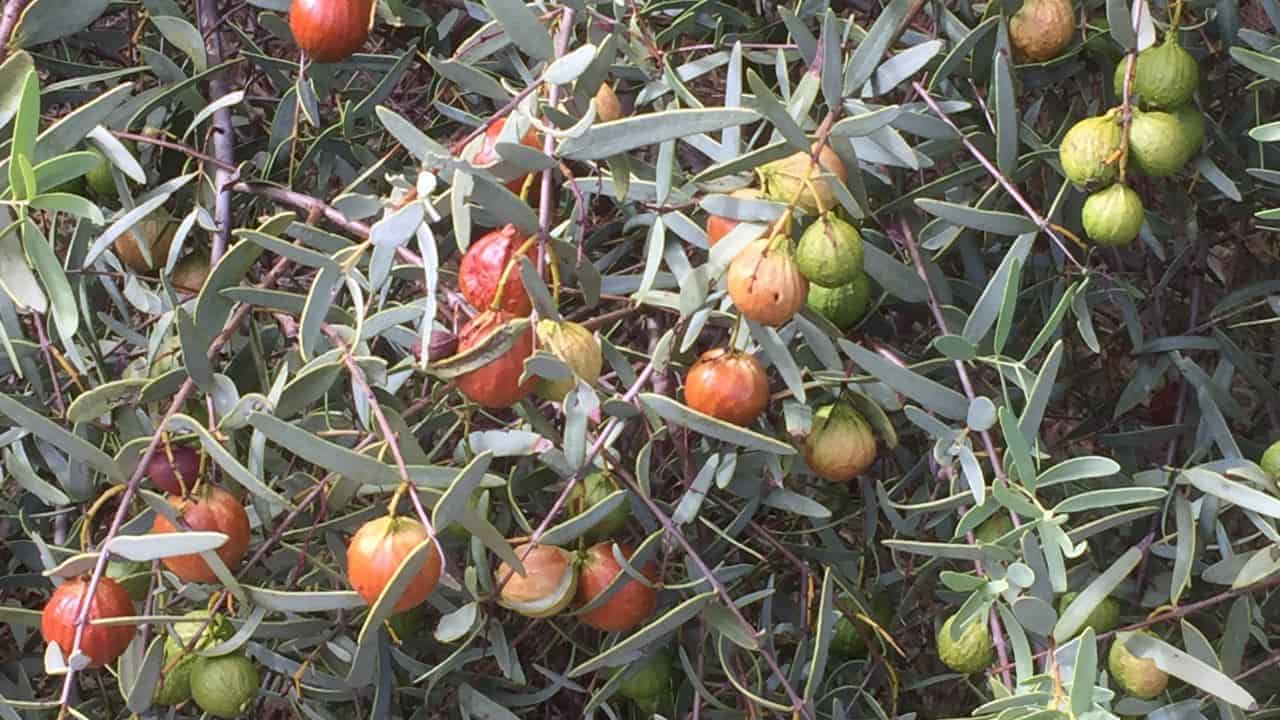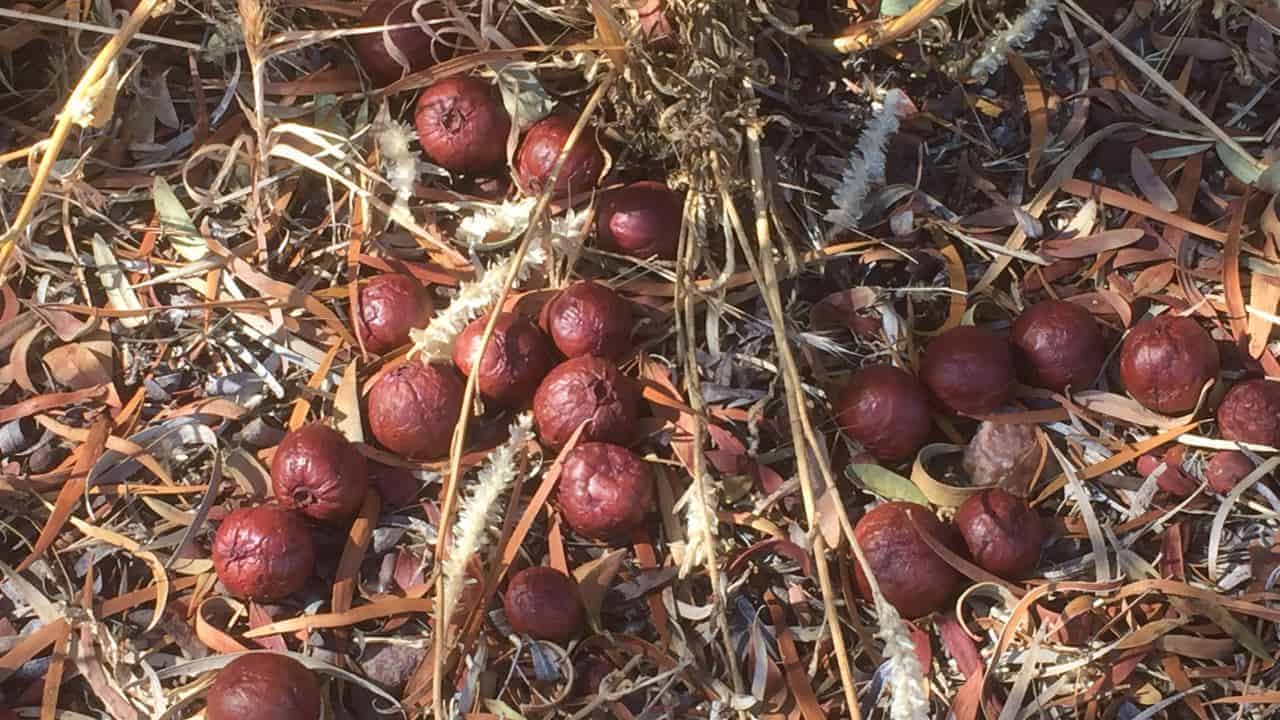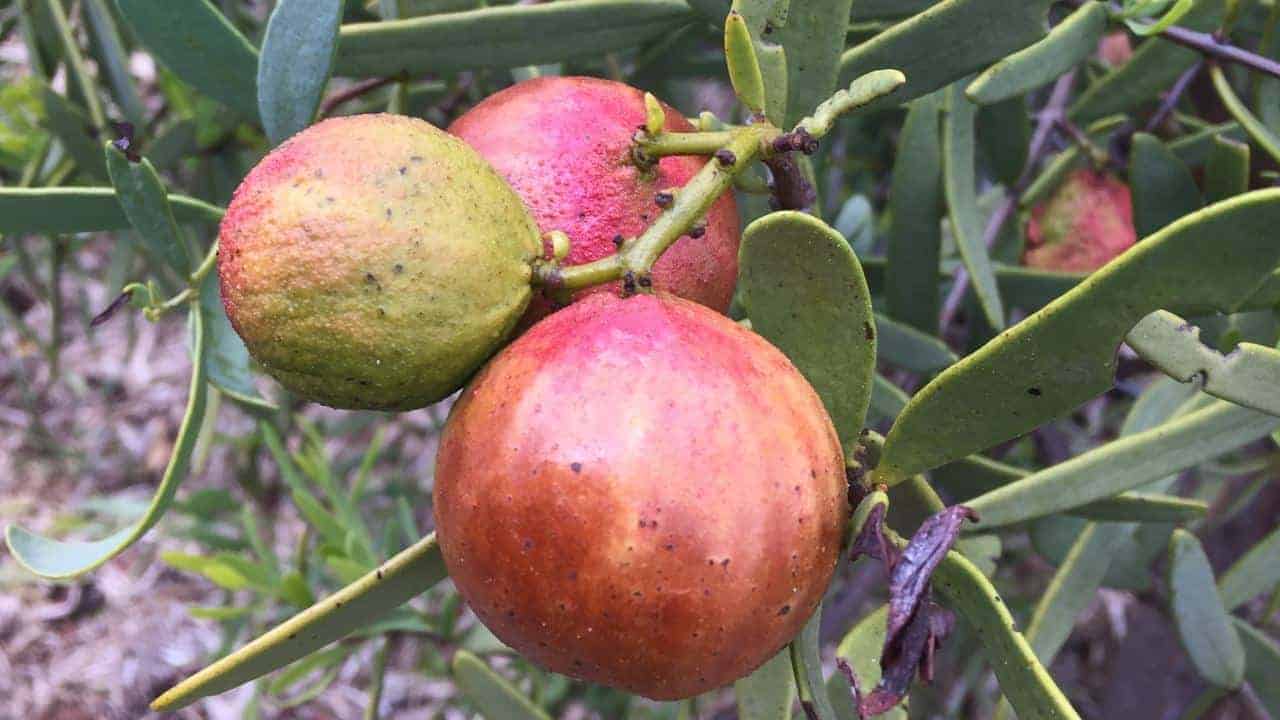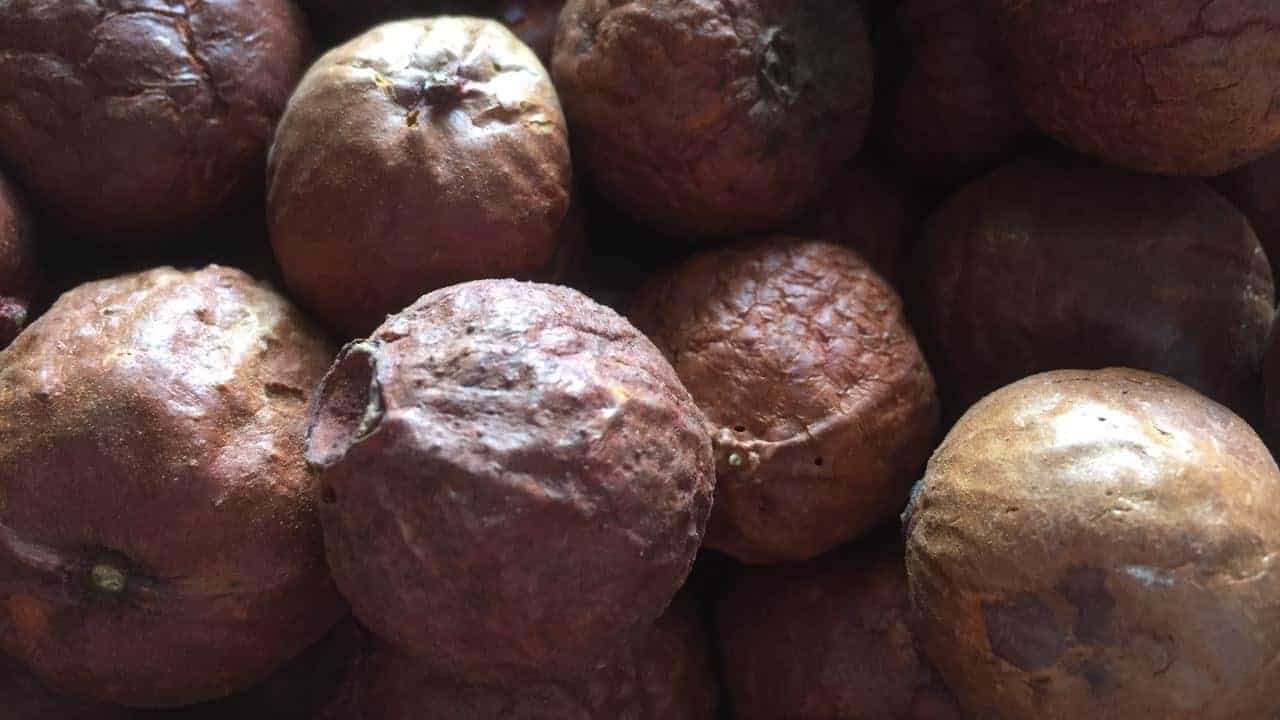Sandalwood Nut
Santalum spicatum
Sandalwood, most commonly associated with incense and perfumes, produces delicious edible fruit and nuts. The nuts also produce a fine oil, traditionally used in Aboriginal medicine as a liniment for body aches. Sandalwood trees can be found in the woodlands and shrublands of southern WA and SA.
The fruits are golden brown, 15-20mm in size, with a thin flesh that may be enjoyed fresh or fried. The creamy, soft nuts inside can be eaten raw, roasted or crushed and used in cooking. They contain 38% omega-9 oils, 17% protein, 17% fibre, with less than 1% carbohydrates.
Small fragrant flowers appear from February to March, followed by fruits throughout the cooler season. In early to mid-Winter, harvest directly off the branch or collect from around the base of the tree.
Sandalwood is ‘root hemi-parasitic’, meaning its roots attach to the roots of other plants to extract water and soil nutrients. Sandalwood trees themselves like loamy, well-drained soils and can tolerate high salinity, rocky soil and some drought. They prefer full sun, but may be grown in dappled shade.
In their native habitat, this plant is a medium to large shrub, typically growing up to 4m in height with a dense crown of grey-green leaves reaching 2m in width. They make an excellent shade or feature plant in the garden, but may be kept smaller in pots with regular pruning.
Do I need to plant other species with my Sandalwood?
Yes. Because Sandalwood is hemiparasitic, it’s recommended to plant a host species like Acacia acuminata, commonly known as the Raspberry Jam wattle. Cymbopogon ambiguus (Native Lemon Grass) can also be used when your Sandalwood is young. Just be careful not to let your host plants overtake your Sandalwood.
What kind of pot can I keep a Sandalwood in?
Choose a medium to large container, ensuring water can drain out easily. You’ll want to leave enough room for additional host plants to ensure your Sandalwood gets the nutrients it needs to grow.
How often should I prune a potted Sandalwood?
It can be lightly trimmed after fruiting in winter

Suitable for full-sun

Suitable for part-shade

Suitable for pots

Dimensions:
Height 4m
Width 2m

Tolerates drought

Tolerates sandy soils

Tolerates salt


Bird attracting

Attracts bees & insects

Attracts lizards

Suitable for gaps

Provides shade




